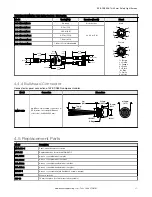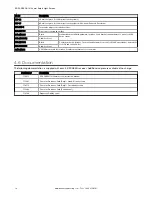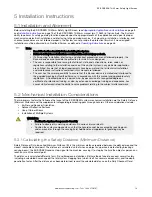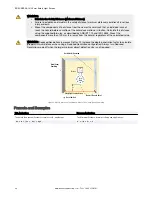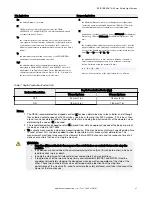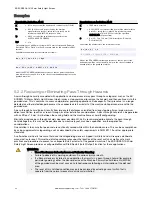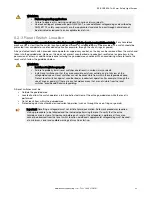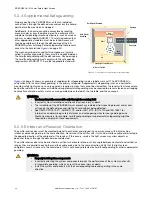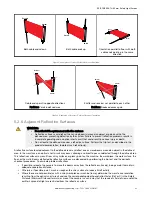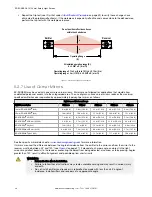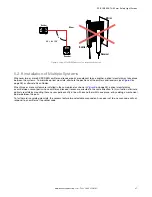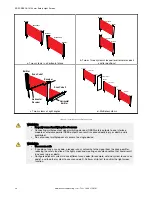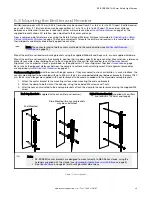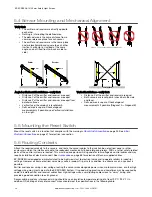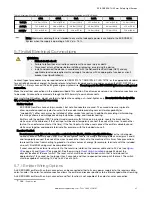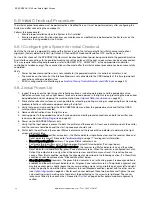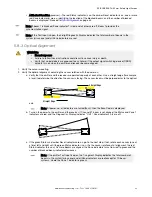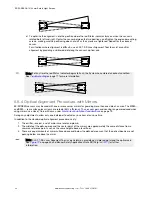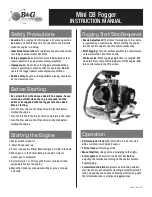
5 Installation Instructions
5.1 Installation and Alignment
Before installing the EZ-SCREEN 14/30mm Safety Light Screen, read
Appropriate Applications and Limitations
and
on page 19 of the EZ-SCREEN 14/30mm manual (p/n 112852) in their entirety. The System’s
ability to perform its safety guarding function depends upon the appropriateness of the application and upon its proper
mechanical and electrical installation and interfacing to the guarded machine. If all mounting, installation, interfacing, and
checkout procedures are not followed properly, the System cannot provide the protection for which it was designed.
Installation must be performed by a Qualified Person, as defined in
on page 48.
Note:
• Read this Section Carefully Before Installing the System
• Failure to follow these instructions could result in serious injury or death.
• If all mounting, installation, interfacing, and checkout procedures are not followed properly, the
Banner device cannot provide the protection for which it was designed.
• The user is responsible for ensuring that all local, state, and national laws, rules, codes, or
regulations relating to the installation and use of this control system in any particular application
are satisfied. Ensure that all legal requirements have been met and that all technical installation
and maintenance instructions contained in this manual are followed.
• The user has the sole responsibility to ensure that this Banner device is installed and interfaced to
the guarded machine by Qualified Persons, in accordance with this manual and applicable safety
regulations. A Qualified person is a person who, by possession of a recognized degree or
certificate of professional training, or who, by extensive knowledge, training and experience, has
successfully demonstrated the ability to solve problems relating to the subject matter and work.
5.2 Mechanical Installation Considerations
The two primary factors that influence the layout of the EZ-SCREEN system mechanical installation are the Safety Distance
(Minimum Distance) and the supplemental safeguarding/eliminating pass-through hazards. Other considerations include:
• Emitter and Receiver Orientation
• Adjacent Reflective Surfaces
• Use of Corner Mirrors
• Installation of Multiple Systems
WARNING:
• Position the System Components Carefully
• Failure to observe this warning could result in serious injury or death.
• Position the system components such that the hazard cannot be accessed by reaching over,
under, around, or through the sensing field. Additional and supplemental guarding may be
required.
5.2.1 Calculating the Safety Distance (Minimum Distance)
Safety Distance (Ds), also called Minimum Distance (S), is the minimum distance required between the defined area and the
closest reachable hazard point. The distance is calculated so that when an object or a person is detected (by blocking a
sensing beam), the EZ-SCREEN sends a stop signal to the machine, causing it to stop by the time the object or person can
reach any machine hazard point.
The distance is calculated differently for U.S. and European installations. Both methods take into account several factors,
including a calculated human speed, the total system stopping time (which itself has several components), and the depth
penetration factor. After the distance has been determined, record the calculated distance on the Daily Checkout Card.
EZ-SCREEN
®
14/30 mm Safety Light Screen
www.bannerengineering.com - Tel: + 1 888 373 6767
19













